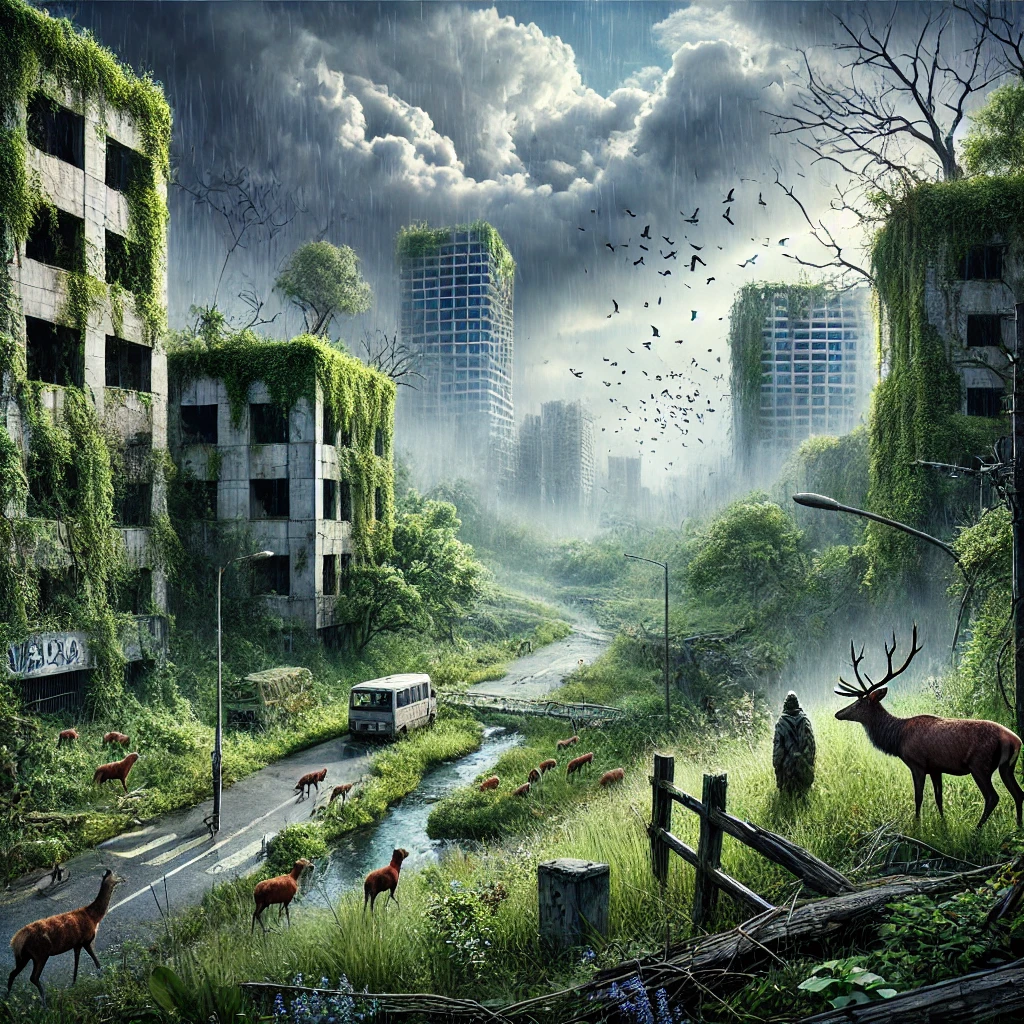Pandemics, Power, and Planetary Peril: Global Security Lessons from “The Stand” is a five-part blog series exploring Stephen King’s The Stand as a lens to examine critical global security challenges. King’s apocalyptic tale reflects humanity’s vulnerabilities and the systems we rely on to survive, from pandemics and biosecurity to climate change and societal resilience. By connecting the novel’s themes to real-world crises, this series highlights lessons for strengthening our preparedness, leadership, and adaptability in an increasingly uncertain world.
BLOG III – Nature Strikes Back: Climate Change, Pandemics, and Environmental Breakdown
Stephen King’s The Stand unfolds in a world decimated by a superflu pandemic, yet beneath its narrative lies an understated theme: the intricate relationship between humanity and the natural world. While the novel focuses on a human-made catastrophe, it also reveals the profound consequences of humanity’s disruption of ecosystems. This blog explores how environmental collapse catalyzes pandemics and societal disruption, emphasizing the importance of human-nature interdependence, zoonotic spillovers, and resilience in crises.
Environmental Collapse as a Catalyst for Pandemics: Human-Nature Interdependence
In The Stand, humanity’s hubris is evident in the creation of a bioengineered virus, but the novel also portrays the silent reclamation of urban spaces as humanity withdraws. Abandoned cities are overrun by vegetation, and wildlife returns to once-inhabited areas, emphasizing how deeply human survival depends on a balanced relationship with the natural world.
This dynamic mirrors real-world crises in which human activity disrupts ecosystems, creating conditions ripe for pandemics. Deforestation, habitat destruction, and urban expansion force wildlife closer to humans, increasing the likelihood of zoonotic spillovers—diseases that jump from animals to humans.
Real-World Parallels:
The COVID-19 pandemic brought these issues to the forefront, with evidence suggesting a zoonotic origin. Other diseases, such as Ebola, HIV, and SARS, have also emerged due to habitat encroachment and environmental degradation.
Discussion:
How does The Stand reflect humanity’s reliance on nature, even in its absence? What lessons can we draw from the novel about the consequences of ignoring this interdependence?
Link to Global Security:
Understanding the interplay between environmental health and human security is critical to preventing future pandemics. Conservation efforts, sustainable development, and habitat restoration can mitigate the risks of zoonotic diseases.
Zoonotic Spillovers and Climate Change
Although the novel does not explicitly address climate change, its portrayal of a global pandemic reflects real-world risks exacerbated by environmental crises. Climate change intensifies the conditions that facilitate zoonotic spillovers by altering ecosystems and driving animals closer to human populations.
The Climate Connection:
- Warming Temperatures: Rising temperatures expand the range of disease vectors, such as mosquitoes, which spread diseases like malaria, dengue fever, and the Zika virus.
- Melting Permafrost: Thawing permafrost has the potential to release ancient pathogens, posing unknown risks to human populations.
- Natural Disasters: Climate-driven disasters displace populations, weaken healthcare systems, and create fertile ground for disease outbreaks.
Real-World Examples:
- The 2022 resurgence of anthrax in Siberia was linked to thawing permafrost exposing infected reindeer carcasses.
- Increased outbreaks of Lyme disease in temperate regions due to warming temperatures altering tick habitats.
Discussion:
What parallels can be drawn between The Stand’s fictional pandemic and the compounded risks posed by climate change in the real world? How can these interconnected threats be addressed?
Link to Global Security:
Addressing the root causes of zoonotic spillovers requires global climate action, enhanced monitoring of wildlife diseases, and investment in healthcare infrastructure to respond to emerging threats.
Post-Collapse Resilience and Adaptation
One of The Stand’s most poignant themes is the resilience of survivors in the face of societal collapse. Communities like the Boulder Free Zone symbolize the capacity for human adaptability and innovation, even in dire circumstances.
Resilience in Real Life:
Building resilience has become a cornerstone of global security strategies as climate change accelerates. The Intergovernmental Panel on Climate Change (IPCC) emphasizes adaptation as essential to mitigating the impacts of climate-driven pandemics and disasters. Key strategies include:
- Community-Based Adaptation: Empowering local populations to address climate risks through tailored solutions.
- Strengthening Infrastructure: Building climate-resilient healthcare, transportation, and energy systems.
- Global Cooperation: Sharing knowledge, resources, and technologies to enhance collective resilience.
Discussion:
How does The Stand demonstrate the importance of community and innovation in rebuilding after a collapse? What can we learn from its portrayal of resilience in tackling climate-related challenges?
Link to Global Security:
Global security frameworks must prioritize resilience by investing in adaptive strategies that address the interconnected threats of pandemics and climate change.
Conclusion: A Call for Harmony with Nature
Stephen King’s The Stand offers a haunting reminder of humanity’s vulnerability when disconnected from nature. While the pandemic in the novel is fictional, its implications are rooted in real-world challenges. Environmental degradation and climate change amplify the risks of pandemics, and only by addressing these interconnected threats can humanity hope to secure its future.
The lessons of The Stand underscore the urgent need for sustainable practices, conservation, and resilience. As we face an uncertain future shaped by climate change and global health crises, the novel’s message is clear: humanity’s survival depends on its ability to coexist with the natural world.
Previous in the Series: “The Stand” and the Collapse of Order: Global Security and the Fragility of Modern Systems, Human Security Crisis: Redefining Safety in a Post-Pandemic World
Next in the Series: Leadership in Crisis: Power, Morality, and the Battle for Survival

